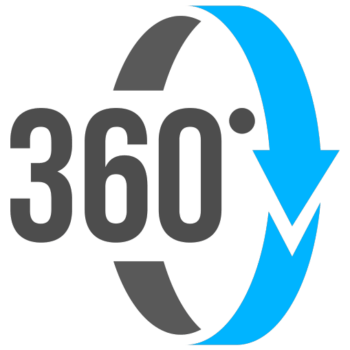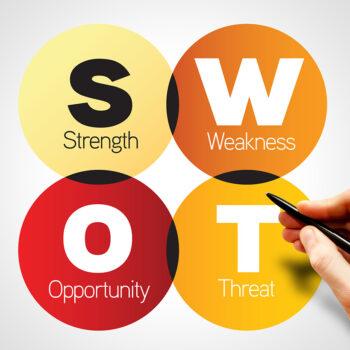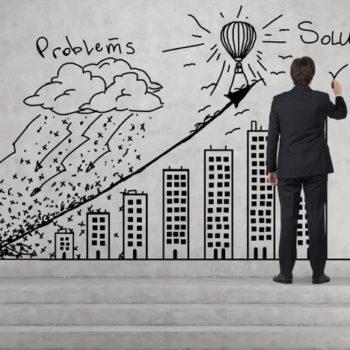
How to Optimize a 360 Feedback Assessment
360 Feedback Assessments are a highly effective way to invest in your organization’s leadership development—if done correctly. Having facilitated hundreds of 360 Feedback Interviews over the past 20 years, I have found that certain best practices will ensure the best results. Define the goals of the 360. In the early stages of discussion, I like to help the client define their goals for implementing a 360 Assessment process. Is this for individual leadership development, to assist in supporting bonuses, raises and promotions, or to improve performance management? Clarifying this up front is key to defining which 360 tool to use, how to administer it effectively and manage its results. Pick the right 360 tool. It is important for stakeholders to understand the benefits of live 360 Feedback Assessments versus digital 360 assessments. Live 360s involve actual interviews facilitated by an Executive Coach with the participants. There are numerous 360 digital platforms (e.g. Culture Amp, SurveySparrow,…

Choosing the Right Strategic Planning Framework
I am often asked by clients which strategic planning framework they should use. In general, strategic planning frameworks provide a structured approach for organizations to define and execute their long-term strategies. While there are numerous frameworks available, I will compare the following: SWOT Analysis, Balanced Scorecard, OKRs, Porter’s Five Forces, and McKinsey’s Three Horizons. SWOT Analysis: Pros: Easy way to assesses internal strengths and weaknesses and external opportunities and threats. Cons: Lacks prioritization and doesn’t provide a clear path for action. Your team must be careful about categorizing and prioritizing the action items. See my previous article on ways to optimize your SWOT analysis. Recommended for: A SWOT is a great for getting a snapshot of the current state of your organization and identifying key areas of focus. Balanced Scorecard: Pros: Offers a balanced view of an organization’s performance and helps align different organizational initiatives. Cons: Can be complex to implement and measure accurately. Recommended…

5 Ways to Optimize a SWOT Analysis
Having facilitated countless SWOTs over the past 15 years, I have found certain best practices to keep in mind. SWOTS are like a 360 process for your business and to do them effectively, you must get buy-in, get a wide range of feedback and translate it into action. Define your objective: First, clearly identify the purpose for conducting the SWOT analysis. Is this to help clarify annual strategic objectives for the entire organization, a specific department, etc. ? Gather feedback: A common misstep I see organizations make is not collecting feedback (“inputs”) about your company, service or products. This feedback be gathered through multiple sources: via customers, channel partners, employees, volunteers, Board members and other stakeholders. This pre-SWOT work is time consuming however provides more comprehensive objectivity. Prioritize and categorize: When working through each of the SWOT domains, categorize any themes and begin to prioritize them. Don’t forget PESTLE: PESTLE is an acronym for looking…

The 3 Stages of Strategic Planning
Understanding the stages and steps of each stage of the strategic planning process is critical to its success. Below is a three stage model with corresponding goals that your team will want to consider. By-passing any of these steps can stall or undermine the process entirely. For example, when a team does not adequately collect employee feedback (stage 1), then it cannot objectively formulate strategic initiatives to, for example, improve the culture. In this Stage 1, organizational readiness must be assessed up front to help anticipate any obstacles, whether cultural, financial, etc. Organizations know they need a Strategic Plan but often don’t have the time, budget or staff allocated to devote to the process. Is this a total reset of an existing Strategic Plan necessary or does it need to be refreshed? Designating a small team to lead the Strat Planning process is also critical at the beginning to keep the entire process on…

Understanding Personality Tools
Selecting the right personality tool to aid leadership and professional development is daunting. There are at least 14 different instruments (and probably more) on the market. And each of these products which has its advantages disadvantages, cost, administration requirement, and applications. First it is important to know why you want to incorporate a personality tool (e.g. for hiring, leadership development, general team building, etc.). Secondly, it is important to understand the different products and their specific applications. I see organizations frequently make the mistake of implementing the wrong tool for the wrong reason. Myers-Briggs Type Indicator (MBTI) Big Five Personality Traits DISC Assessment Enneagram Hogan Personality Inventory (HPI) StrengthsFinder California Psychological Inventory (CPI) 16PF Questionnaire NEO Personality Inventory (NEO-PI) Emotional Intelligence (EQ) assessments (e.g., EQ-i 2.0) Belbin Team Roles Social Styles Keirsey Temperament Sorter (KTS) CliftonStrengths (formerly known as StrengthsQuest) Below I offer some insight into three of the most popular personality tools. Myers-Briggs Type…

Personality Drivers & Derailers to Entering Flow States
In a previous article “The Focus Factor”, I outline a framework for different styles of focus. In a nutshell: to thrive in the workplace (and life) we need to flex between the different styles of focus, leverage their strengths and be mindful of their pitfalls. One of these styles of focus is “Flow” or what I refer to as “Immersed Focus”. Flow is the experience of completing losing oneself in an activity such that time and self-consciousness disappears. Flow is seen by many high performers, whether athletes, executives or chess players, as the promise land of focus. Yet, why is the entry to flow so difficult? Why do so few people experience flow in any consistent way? Flow researchers would argue that you must employ certain practices to create the conditions for flow which I return to below. However the role of personality has a huge impact in either enabling or derailing the flow experience….

5 Crucial Questions that Support Strategic Thinking
Strategic leadership thinking is not just what you think about but how you think. And there is a wide range of strategic thinking skills, frameworks and tools that leaders can use. First, leaders must let go of this belief that they must withdraw from the day-to-day order to think more strategically. While retreat for individual leaders and leadership teams is important, leaders must also learn to think creatively and strategically in the moment given today’s accelerated work environment. I coach my clients to understand that you can think critically and stay engaged at the same time. “Second-order thinking” is a crucial skill that allows leaders to do this effectively. First vs Second Order Thinking First-order thinking involves our immediate response to solving a problem and often focuses on short-term solutions. This approach is faster and involves minimal complexity. However first-order thinking also can fail to play out scenarios, risks and the impact of their decisions on…

The Focus Factor: The Power of Attentional Flexibility
As an Executive Coach, the ability to focus is perhaps the single biggest struggle that I see clients facing. With incessant demands on our time and attention, endless collaborative opportunities, distributed work environments, and dependency on multiple communication platforms, it has become increasingly difficult to simply focus and get things done. But we must look beyond these external realities and ask ourselves: how does focus work and moreover, how do we get focus to work for us? In digging into these questions, I found very splintered views on what kinds of focus are useful and which are not. This article argues a few key principles: That there are distinct styles of focus that exist on a continuum That each style of focus has value to tap and limitations to manage That a key to high performance is the ability to fluidly shift between these styles of focus We know from everyday experience that there are…

The Well-Rounded Company: Business Planning and Our Instinctual Biases
A business grows in stages and its success often hinges on the ability to navigate the common challenges of each stage. Business however often expands and contracts in messy, unpredictable ways due to countless external forces in the market, customer needs and global events. While there are certain stages to business growth, the process through these stages is often divergent and winding, rather than linear. This article presents a model of personality related to fundamental values—those things we think are important and focus our attention on, sometimes to the detriment of other areas. We explain how our innate Instinctual Biases can shape how we attend to business, often contributing to both our success and our struggles. Understanding these non-conscious biases and learning to manage them rather than be impeded by them can greatly increase the chances of a business succeeding, especially as it finds its footing in the early stages of its life-cycle. It is…
